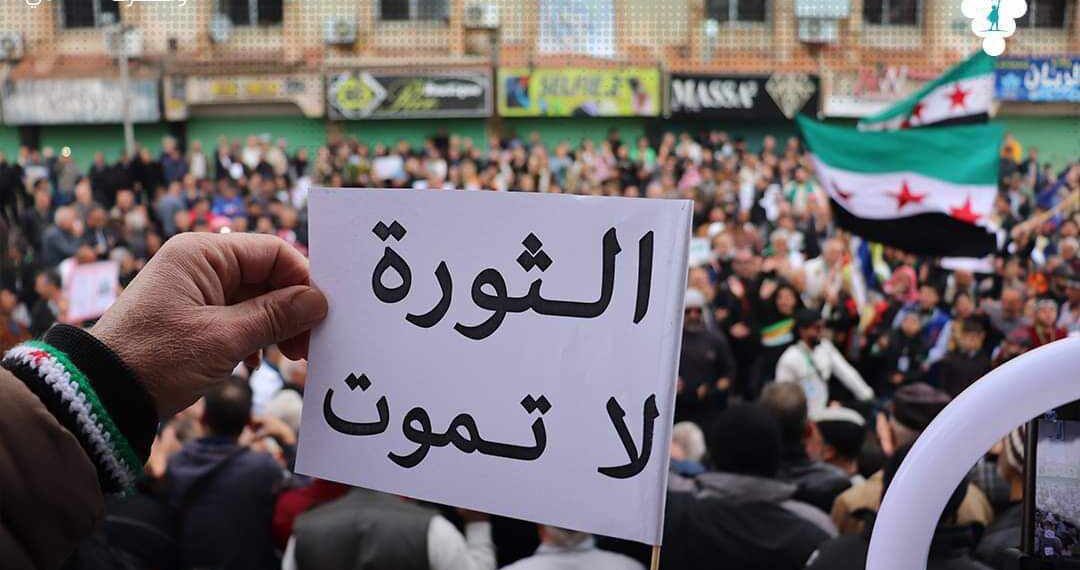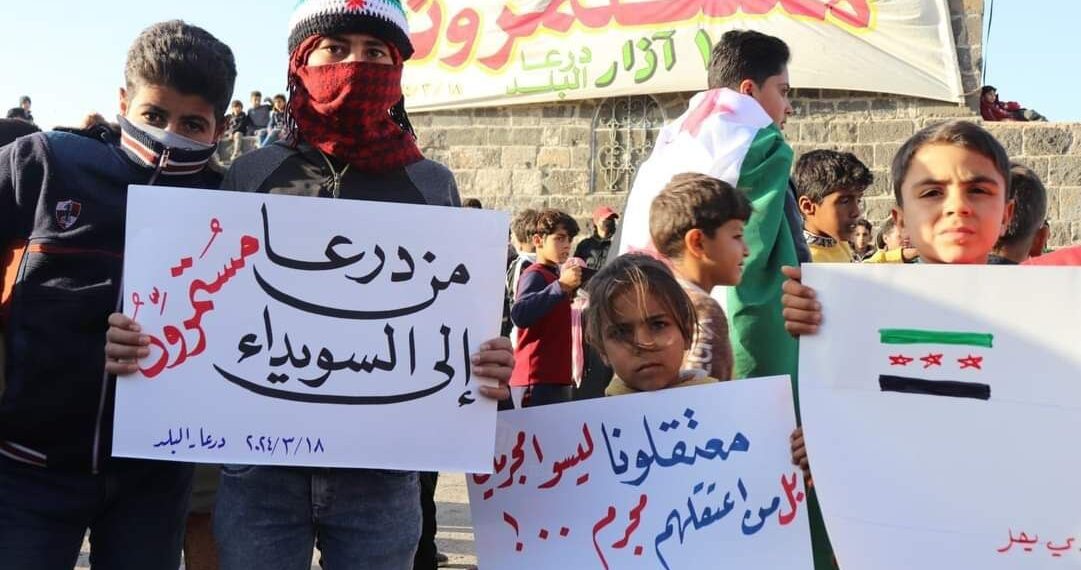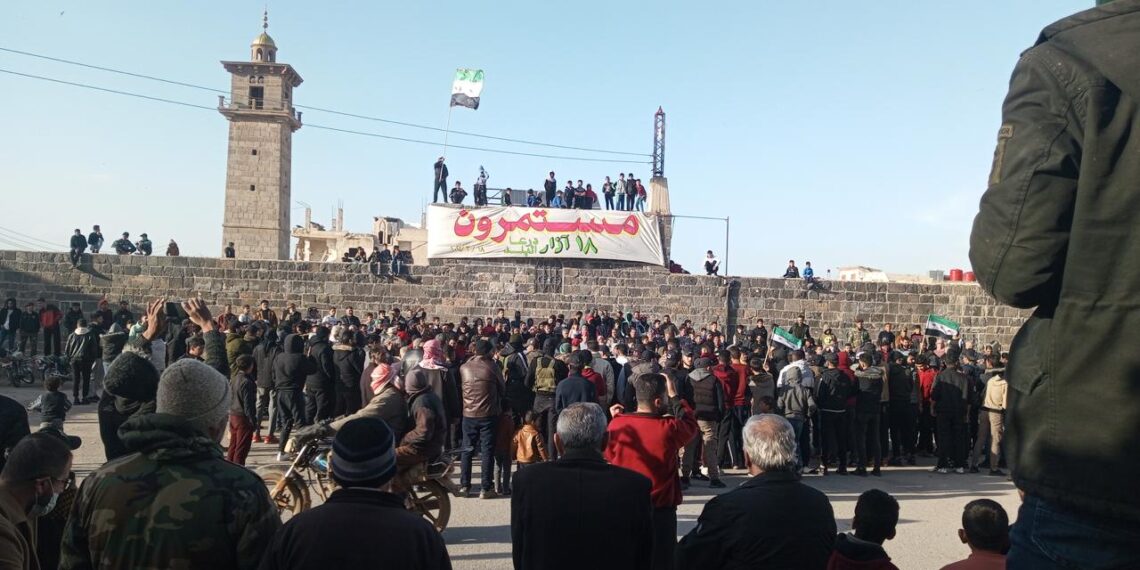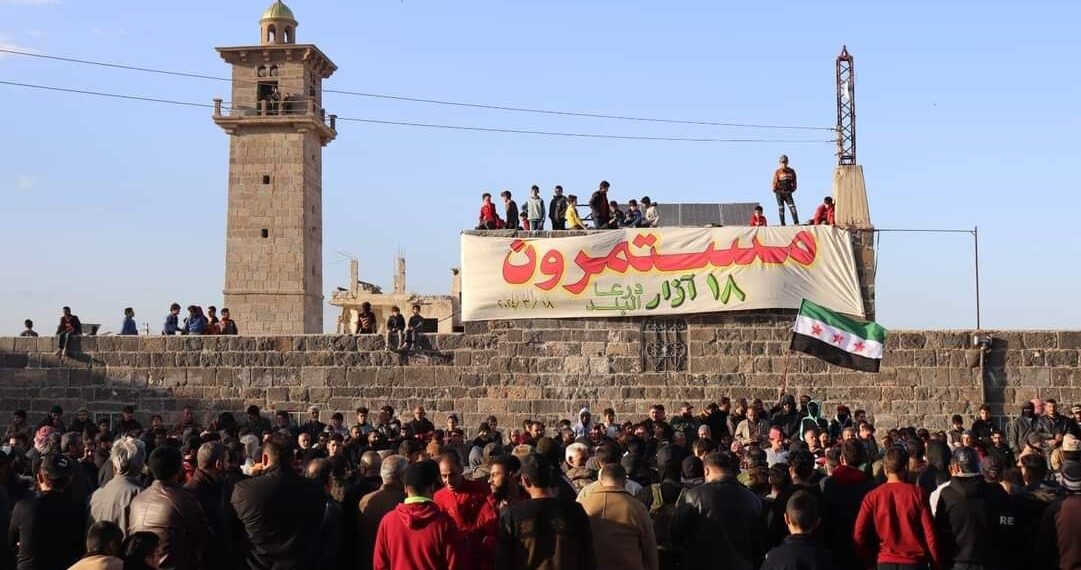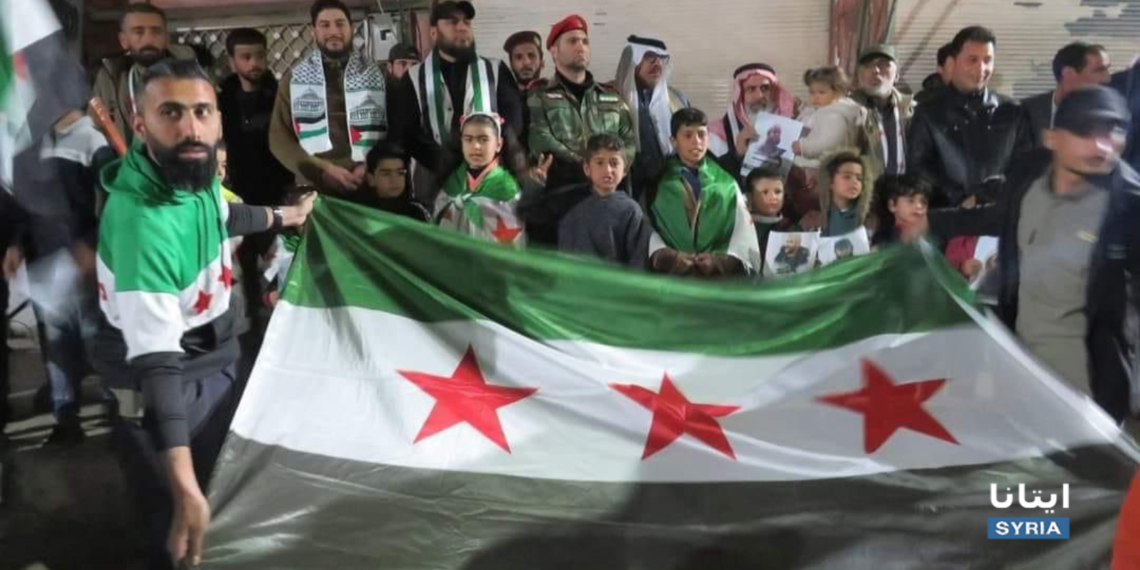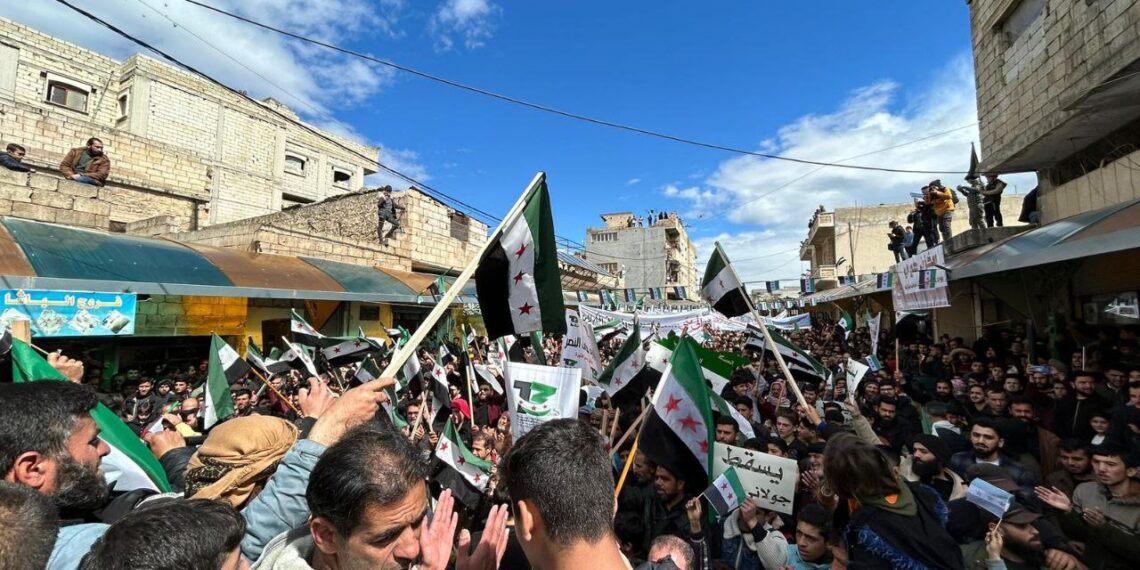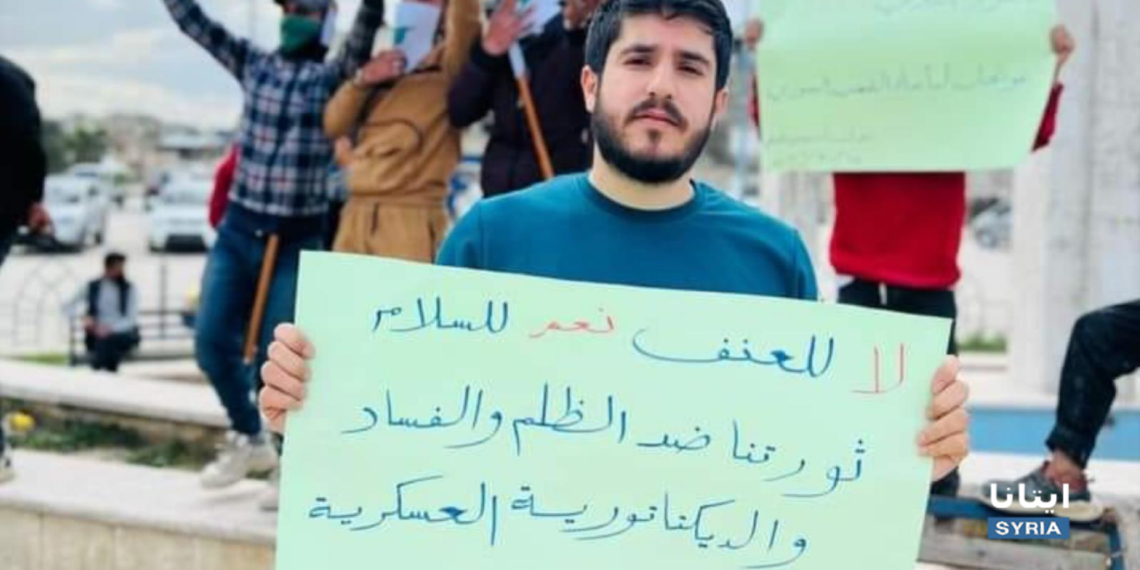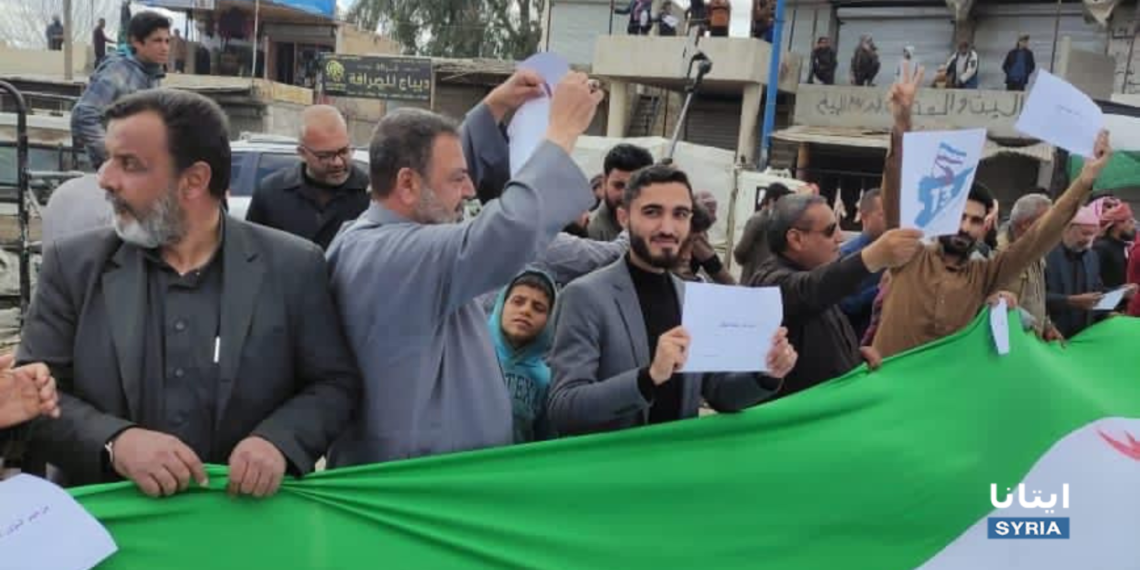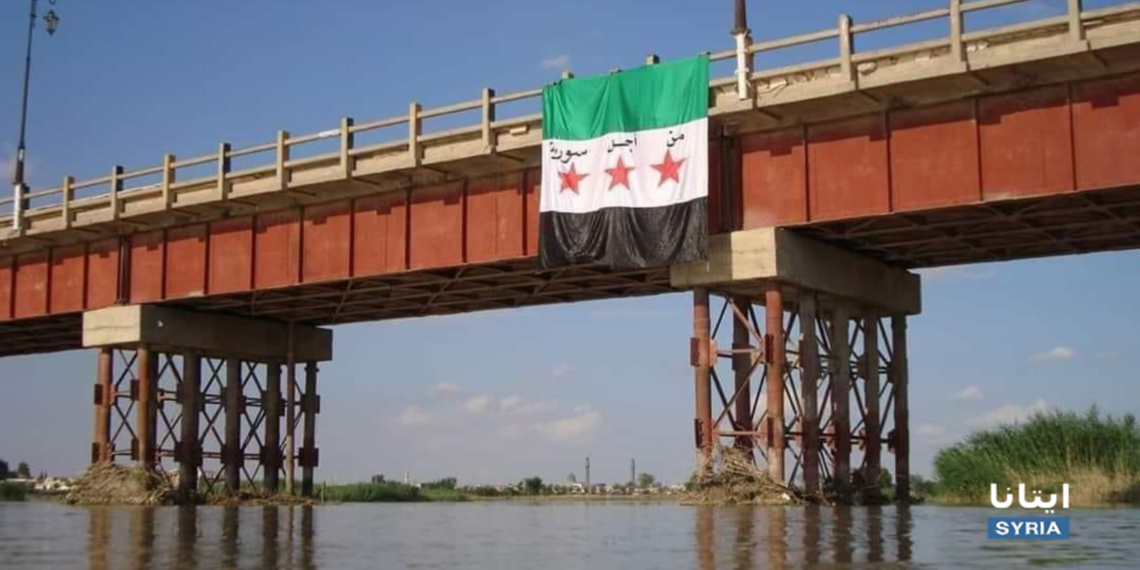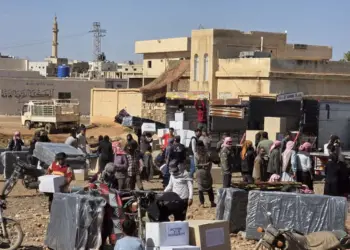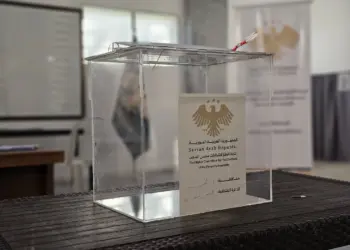Thirteen years after the first anti-Assad protests broke out in Daraa in 2011, demonstrators across Syria commemorated the anniversary by calling for the overthrow of Bashar al-Assad, Iran’s expulsion from the country, and the release of detainees.
Many of the demands expressed this week echoed the calls of March 2011: a life with dignity and liberty from the regime.
For 13 years, more than half of his oppressive rule over the country, Assad and his backers have been at war with the Syrian people. Rights organizations estimate that at least 100,000 detainees are still forcibly disappeared, missing or unaccounted for in the regime’s notoriously brutal detention archipelago, many of them detained in the regime’s brutal crackdown in the first few years of the uprising; hundreds of thousands of civilians have been killed throughout the conflict. More than a decade ago, Syrians rose up to demand a life with dignity and liberty. Assad cannot and will not deliver these demands.
Nationwide protests
On 15th and 18th March, thousands across the country returned to the streets to commemorate more than a decade of the Syrian uprising. Demonstrations took place in Aleppo, Daraa, Deir Ezzor, Idlib, Raqqa and Suwayda provinces, while anti-regime graffiti also appeared in Kanaker—a regime-controlled town in Rural Damascus.
On the eve of the anniversary, the UN Independent International Commission of Inquiry on Syria warned that the country is witnessing its largest wave of violence in four years. Syria today faces a rapidly declining economy worsened by regime corruption and economic mismanagement. Since October, the south and Damascus are under constant threat of Israeli airstrikes targeting regime and Iranian-backed or Hezbollah positions and personnel.
Communities in Idlib, controlled by Hay’at Tahrir al-Sham (HTS), declared their solidarity with Daraa—the province widely considered to be the birthplace of the Syrian uprising. It was in Daraa al-Balad that protests against the regime first broke out in March 2011, and where security forces responded with lethal violence in the face of peaceful demonstrators.
“From Daraa to Suwayda”
In the south, protesters in Suwayda launched their own public protest movement seven months ago to demand regime reforms in the face of subsidy cuts. Although Druze-majority Suwayda, unlike neighboring Daraa, did not broadly participate in the 2011 uprising, worsening socio-economic conditions initially prompted the community to take to the streets.
Since then, Suwayda’s protest movement has become explicit in calling for the removal of Assad and demanding the expulsion of Iran and Hezbollah from the south. With Assad’s tacit consent, Iran and its proxies have entrenched themselves in south Syria, where they support the illicit smuggling trade and provide Iran with a front against Israel. Since October, these groups have continued to use their positions to launch attacks toward Israel, prompting retaliatory strikes across the south and civilian displacements.
In Daraa, long-known as the “cradle” of the Syrian uprising, major protests were held the evening of 18th March. Though some mark the anniversary on 15th March, the date in 2011 when smaller and less explicitly anti-regime protests took place in Damascus 13 years ago, the protests in Daraa are often considered the first major spark that saw the anti-Assad uprising spread across the country. On that Friday 13 years ago, protesters in Daraa were met with tear gas and bullets from security forces. Two people were killed in the clashes, marking the first deaths in the Syrian uprising.
“A revolution for all Syrians”
In Idlib, protests broke out earlier last month against HTS over widespread arrests as well as corruption and economic mismanagement that have worsened already-dire economic conditions. Signs denouncing both HTS leader Abu Muhammad al-Jolani and Assad were raised across the province.
